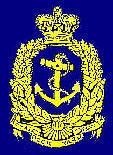
Regiments in Pembroke Dock
compiled by Mr Ron Watts.©
A great many towns and cities across the United Kingdom have a proud military history. Pembroke Dock, although only a small town is
one such town – its garrison grew to become the seventh largest in the United Kingdom.
The garrison's foundation was laid when a Royal Dockyard was established in 1814. Two companies of Royal Marine Light Infantry, one
from Chatham the other from Portsmouth, arrived on orders of the Naval Department to guard it.
The first Line regiment, the 14th Foot, did not arrive until the 1840s, quickly followed by others who not only assisted in guarding the
dockyard but also in furthering their foot drill and musketry skills, At first they were all billeted under canvas on St. Patrick's Hill, which
overlooked the dockyard. By December 1845 Treowen Barracks, which could house 400 men, was completed.
As troop concentration increased, so the need for more permanent camps became paramount. The first of these was constructed to the
east of town, and this area is still known today as Bush Camp. By the outbreak of the Crimean War in 1854 this camp had become more
permanent with the construction of sufficient wooden huts to house 1000 men or one battalion, but even this proved inadequate. A further camp was therefore
ordered. Built in 1855, this was also constructed of wood and was sited at the base of Llanion Hill, which stands just north of the town above Hobbs Point, again
it was of and sufficient in size to house 1000 men. The engineer appointed to this task was Colonel Crawley of the Royal Engineers, whose own men lived under
canvas at East Pennar Point, which stands to the south west of town.
Pembroke Dock was now walled in on three sides by military camps, while the Cleddau River formed the fourth and strongest wall with many forts and
blockhouses spread along its banks to the sea some seven miles away, all this combined to create an almost impregnable fortress.
The garrison continued to expand as troops arrived from the length and breadth of the Kingdom, at such a pace that eventually the camps were overflowing.
This resulted in disease breaking out among the troops, due to the squalid conditions. The conditions became so intolerable that the sick were transported to
Freshwater East where they lived under canvas for a week or two, so enabling them to breathe fresh air once more.
By the turn of the century the Royal Engineers' Barracks at East Pennar Point was constructed of brick. At the same time plans were drawn to construct an even
larger barracks to take the place of the ageing wooden camps at Bush and Llanion. These barracks were to be of red brick. It is said their design was taken from
those built in India - whether this is fact or fiction is of little consequence. It opened in 1904 and the buildings, which dominated the highest hill in town,
certainly stood out as the most modern of their time.
Between 1947 and 1960 the military was reduced in size. This led to Bush Camp being dismantled, while the Royal Engineers' Barracks at East Pennar Point was
abandoned. Today all that remains of our glorious past is Treowen Barracks, now renamed The Defensible Barracks on St. Patrick's Hill, where it is virtually
surrounded by new buildings and a golf course - the trappings of a modern town. On the north side, Llanion Hill is still dominated by the remains of Llanion
Barracks, but the barrack blocks and Guard Room have now been converted to flats while the N.A.A.F.I. now houses the Department of Social Security.
Pembroke Dock will never forget its past, as today many of its streets bear the names of the regiments and the founding fathers, which during the short history
of the town made it what it is today.

Those regiments are listed in the following .pdf documents they will open in a new window in your browser
Regiments in Pembroke Dock 1847/1967 pdf
.
Regiments in Llanion Barracks 1905/1967 pdf

TOP
HOME
(Amendment, updates and additions) (AJ) Anndra Johnstone
This site is designed, published and hosted by CatsWebCom Community Services © 2018 part of Pembroke Dock Web Project






















